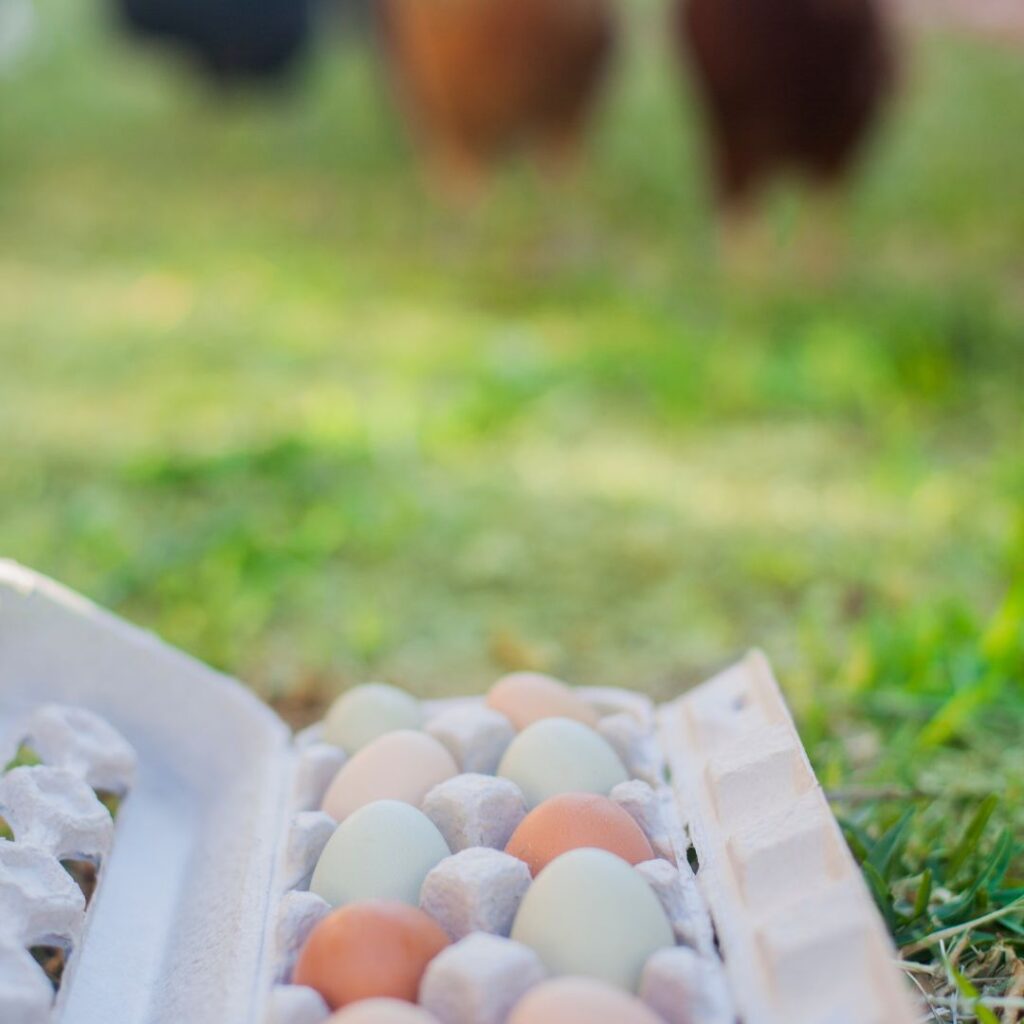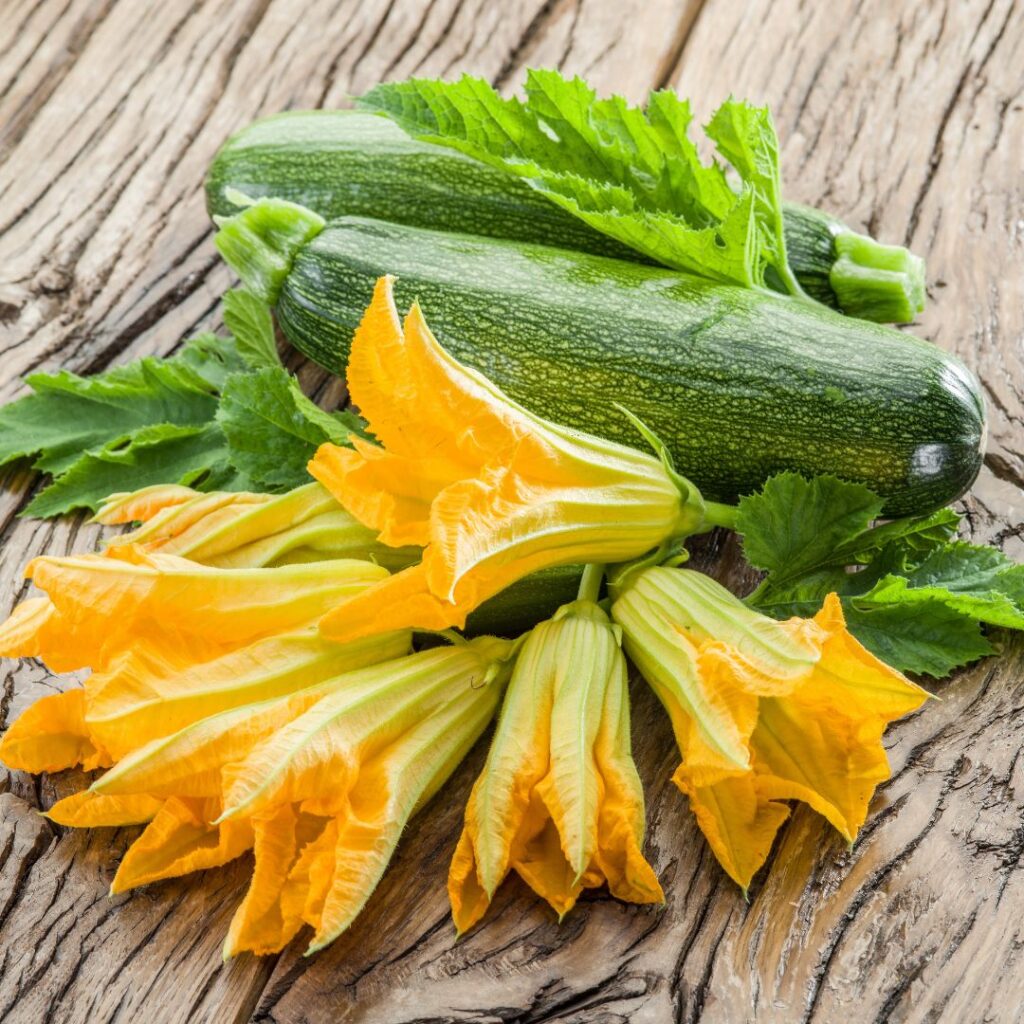The Polish chicken breed is a curious, eye-catching breed of chickens. It has been around since the 16th century and is known for its unique head feathers, which form a “pom pom” or mop on the top of their heads. In this article, we’ll discuss the fascinating Polish chicken breed, from their history and appearance to their personalities and egg production capabilities. We’ll even list some pros and cons to help you decide if the Polish chicken is the right chicken breed for you.

History of the Polish Chickens Breed
Polish chicken-like birds have been admired in the works of many famous Dutch and Italian artists during the 1400s and throughout the 1700s. Literature also mentioned their existence during this time, testifying to their popularity.
Unfortunately, we don’t know the origin of these unique birds – it’s possible that their ancestors were connected to Asian Mongols who traveled to Central and Eastern Europe in the Middle Ages. This theory suggests the birds could have come from Poland; however, there is no definite proof. Nevertheless, these remarkable beauties have carried on a strong presence throughout history that has spanned centuries.
The Polish chicken has a long and varied history, with its name having been derived from various sources over the centuries. Polish chickens are known by names such as “Poland,” “Tophat,” and Paduan.

Charles Darwin first classified this type of chicken as “Polish” or “Crested,” likely due to the knotted feathers on its head resembling feathered caps worn by Polish soldiers at the time.
Other theories suggest that the bird’s name comes from the Dutch word “Pol,” meaning “large head.”
Records of Polish chickens being present in England can be traced back to the 1700s. They made an appearance in America sometime between 1830 and 1840, during which they rapidly spread throughout America. However, their popularity waned in the 1890s when Leghorn chickens arrived as prolific egg layers, leaving the Polish chicken primarily bred for a “show” bird over egg production.

What’s up with those head feathers? Polish Chicken Breed Standard
Polish chickens are small birds; males weigh about six pounds, while hens weigh four and a half pounds.
The most striking feature of this chicken is its head feathers. The feathers sprout from the head, giving them an amusing look that any backyard chicken keeper will recognize immediately.
These birds have a prominent boney skull, which adds further definition to their crest. Other physical characteristics include:
- Red V Shaped Comb
- Red Wattles
- Very Large Nostrils
- White Earlobes
- White Skin
- Clean Gray Legs
- Four toes on each foot.
Aside from the crested head feathers, some of this breed is ‘bearded,’ meaning you will also see feathers on their faces.

Polish Hens VS Roosters
Aside from the larger combs and wattles (camouflaged by the feathers) on the roosters, the primary difference between the two sexes is their crest feathers.
Hens have fluffy pom-pom-appearing feathers atop the crests.
Roosters have a punk rocker look, more like unkept mop-like feathers atop that large prominent skull.
Hens have tail feathers that are shorter and upright compared to roosters.
Roosters have longer-arched tail feathers.
Hens weigh 4.5 lbs, and Roosters weigh 6 lbs.
Polish Baby Chicks
These little balls of fluff are enhanced further by the soft mohawk/ pom-pom atop those tiny heads. The below video shows the baby polish chicks for the White Crested Blue Polish chickens.
Variations of the Polish Breed Chickens
There are a lot of feather color patterns, and variations with these Polish chickens; most noticeable is the males tend to take on a punk rocker look, and the females, with their pom poms, look like they’re off to cinderella’s ball. This breed has the most stunning mix of colors to choose from.
American Poultry Association recognizes many (10) polish color patterns, but many more are not on the APA list.
Note: Polish chickens are a Heritage breed. All American Poultry Association accepted Polish chickens are on the Livestock conservancy ‘Watch” list.
1874- non-bearded white crested black, golden, silver, and white varieties of Polish chickens
1883 – Bearded Golden, Bearded Silver, Bearded White, and Bearded Buff Laced
1938 – Non-Bearded Buff Laced
1963 – Non-Bearded White Crested Blue

As you’ll see, there are many types of Polish chickens. Other variations known are (not on the APA list):
- Blue Polish chicken
- Buff Laced
- Golden, Bearded Golden
- Non-Bearded White Crested Chicken
- Bearded White Crested Blue
- Bearded White Crested Black
- Silver Laced
- Splash
- Tolbunt
- White
- White Crested Black
- Polish Frizzle
Read about the American Poultry Association here.
Read about The Livestock Conservancy here.

The personality of the Polish chicken
Polish chickens have outstanding personalities. They are gentle, calm birds and make great pets for beginners who want to learn more about chicken keeping.
Although they can be somewhat flighty due to their poor eyesight caused by those head feathers, with a bit of time and patience, you’ll soon have lap-ready chickens.
To minimize these reactions, you can lightly trim some of their head feathers so that they can better see what’s around them.
If keeping feathers long, announce yourself with some ‘small-talk’ as you approach your chickens so they know you’re coming.
If you raise Polish chickens as a hobby or as an exhibition bird, you will be rewarded with some genuinely unique-looking and conversation-worthy poultry.

Do Polish chickens Get Along With Other Chickens?
Polish chickens are friendly yet cautious. Their head feathers make it hard for them to see what’s coming up on them, making them startle easier.
They do tend to get picked on by more assertive breeds, and it’s best to keep these breeds with similar chickens or even a very docile hybrid like the Golden Comet.
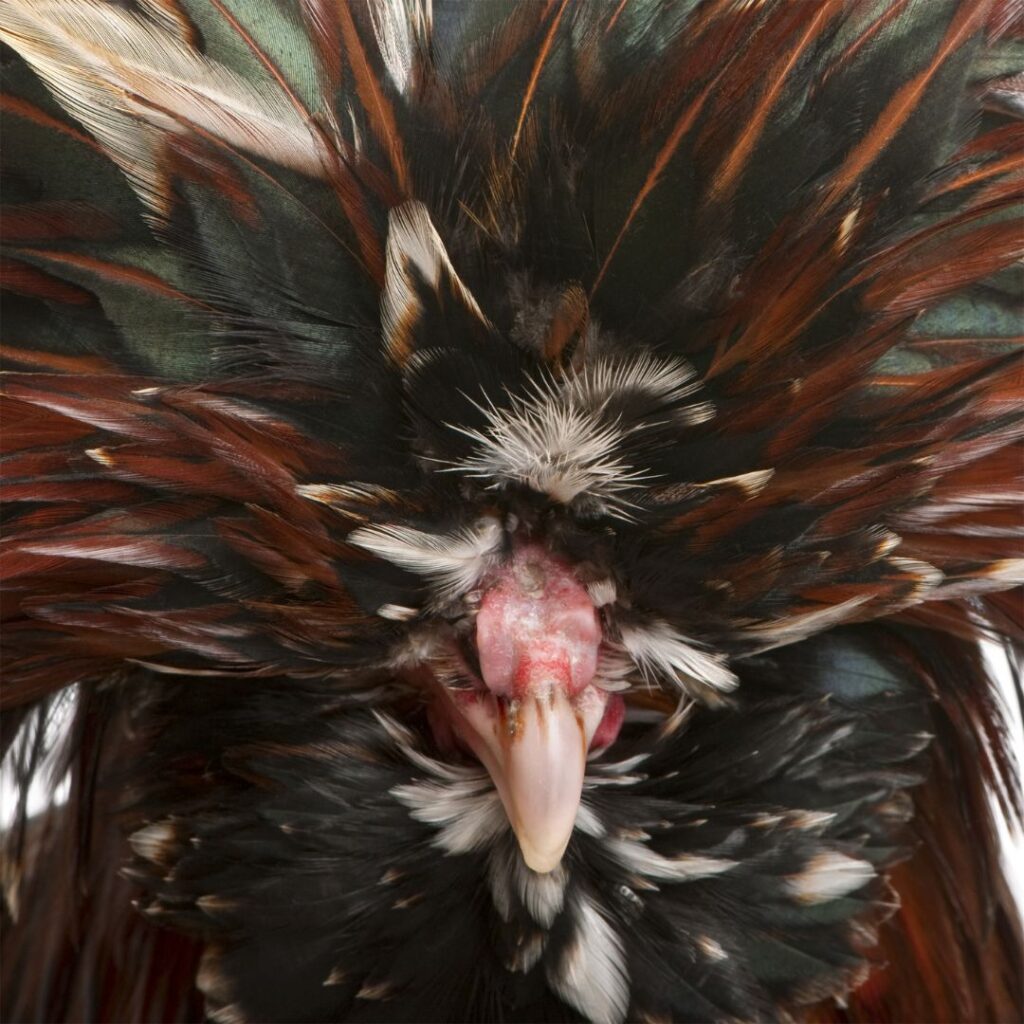
Are Polish Roosters Aggressive?
Polish roosters are generally quite docile and less quarrelsome than other breeds. They usually prefer sitting back and letting other chickens lead in the flock.
Known for their distinctive crest of feathers, they are elegant and handsome creatures, though this can be somewhat of a double-edged sword. As their head plumage makes it difficult for them to see well, this, in turn, means they aren’t great at protecting the flock or detecting danger.
Those lovely feathers make them an irresistible target for pecking by more aggressive chickens, which can cause injury if left unchecked.
Polish chickens do best in flocks with other calm, docile breeds of similar size.
Read more about roosters here.
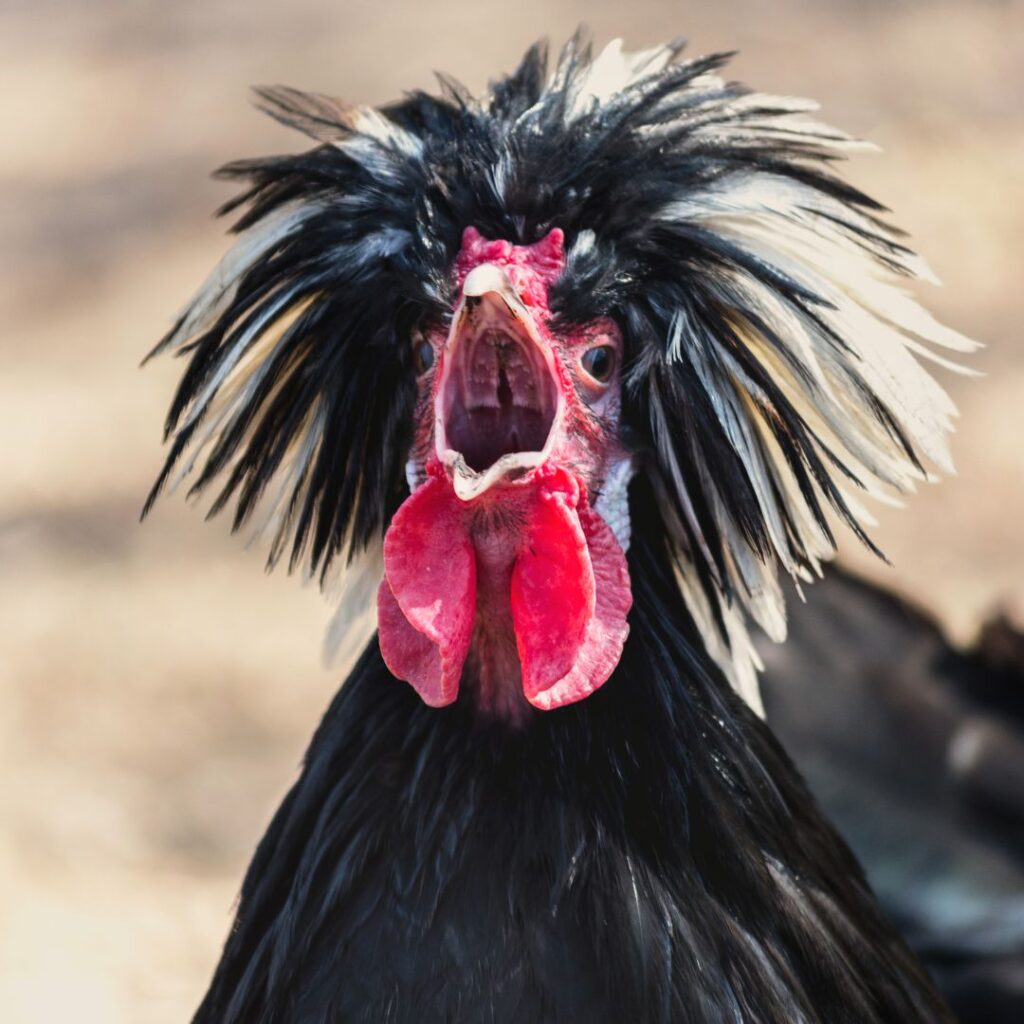
Are Polish Chickens Noisy?
The volume is somewhere around the middle of the noise level. As for the frequency of noise, they are chatty and social. They will make more noise around egg-laying times and when startled. Roosters can be a bit louder during mating season.
Read about quiet chicken breeds here.
Is The Polish Bird Good For Meat?
You won’t want to be raising Polish chickens for meat. Their size isn’t ideal for meat nor ‘meaty’ in the chest or leg/ thigh areas (the most desirable meat qualities).

Are Polish hens good egg layers?
Polish chickens are good, not incredible egg-laying birds. You can expect 2-3 medium white eggs weekly from these hens, 100-150 annually. There are occasional Polish that will gift you up to 200 a year. Find out how to properly clean and store fresh eggs here.
The hens will start laying eggs around 20 weeks old and continue throughout the laying season consistently.
Are Polish hens broody?
Polish females are less likely to be broody hens than other chicken breeds. This is a plus because you want to get as many eggs as these ladies as you can.
This doesn’t mean you can’t hatch a Polish hen-fertilized egg. You could take the fertilized chicken egg and allow a more broody hen to sit on it or even use an incubator.

Is The Polish Chicken Breed Cold Hardy?
Polish chickens are not particularly cold hardy chickens. If you live in a colder climate, you’ll want to have your coop well prepared for winter and consider adding a heating source. Read more about chicken care during winter months here.
Read about the best Cold Hardy chicken breeds here.
Are The Polish Heat Tolerant Chickens?
Yes, these birds love the warm weather and do best in warmer climates.
Read about more heat-tolerant chickens here.
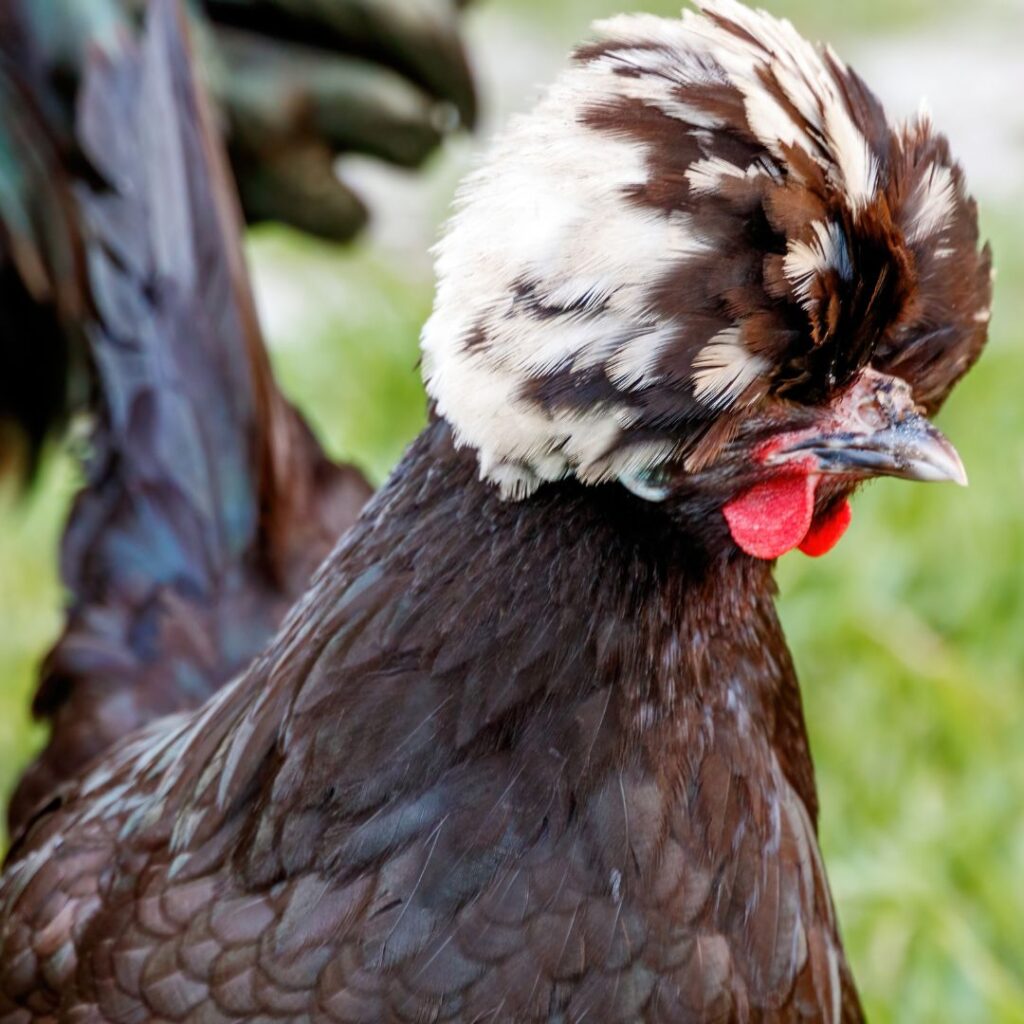
Caring For A Polish Flock
Polish chickens need a secure and comfortable coop that is well-ventilated to ensure they stay healthy. The coop should have several perches and nesting boxes to provide them with space to rest and lay eggs. Read more about how long chickens lay eggs here.
The coop should also have adequate insulation to keep them warm during cold weather and plenty of shade in hot weather. You’ll also want space for their food and water. It’s also a good idea to provide them with some dust bath areas so they can stay clean.
Finally, make sure the coop is secure and predator-proof. Polish chickens are smaller in size than other breeds, so you’ll need to take extra precautions to keep them safe from predators.
Chicken coop
Space
It is important that each Polish chicken has 6 square feet of space. Utilize this area for nesting boxes, roosts, and feeders/waterers in order to provide your birds with a safe and comfortable environment.
Additionally, if you plan on hatching Polish chicks with either a broody hen or an incubator, remember to factor this extra growth into your total space requirements.
Roosts
Giving each bird 8″ of roosting space is the ideal way to keep them comfortable, as this area will be where your Polish chicken will spend their time sleeping and taking winter naps.
During cold times, Polish chickens tend to bunch together for (body heat) warmth; however, when summer rolls around, they’ll spread out and use all the perch space.
Nesting boxes
A 12″ square nesting box is necessary to guarantee your egg-laying Polish hens are content. The ratio should also be 1:4 – one nest per four chickens.
Provide plenty of extra bedding for added protection on those freshly laid eggs!
Read more about nesting boxes here.
Feeders and Waterers
Make sure to always keep these waterers and feeders clean and fresh. To prevent litter from getting into the water, you should elevate them off the ground.
During the winter season, replace your bird’s water frequently when temperatures are cold enough that it might freeze; if this isn’t possible, then a heated waterer or bowl warmer can be purchased as an alternate option.
Likewise, occasionally add ice cubes to the water in the summertime, so its temperature remains cool for your thirsty birds.
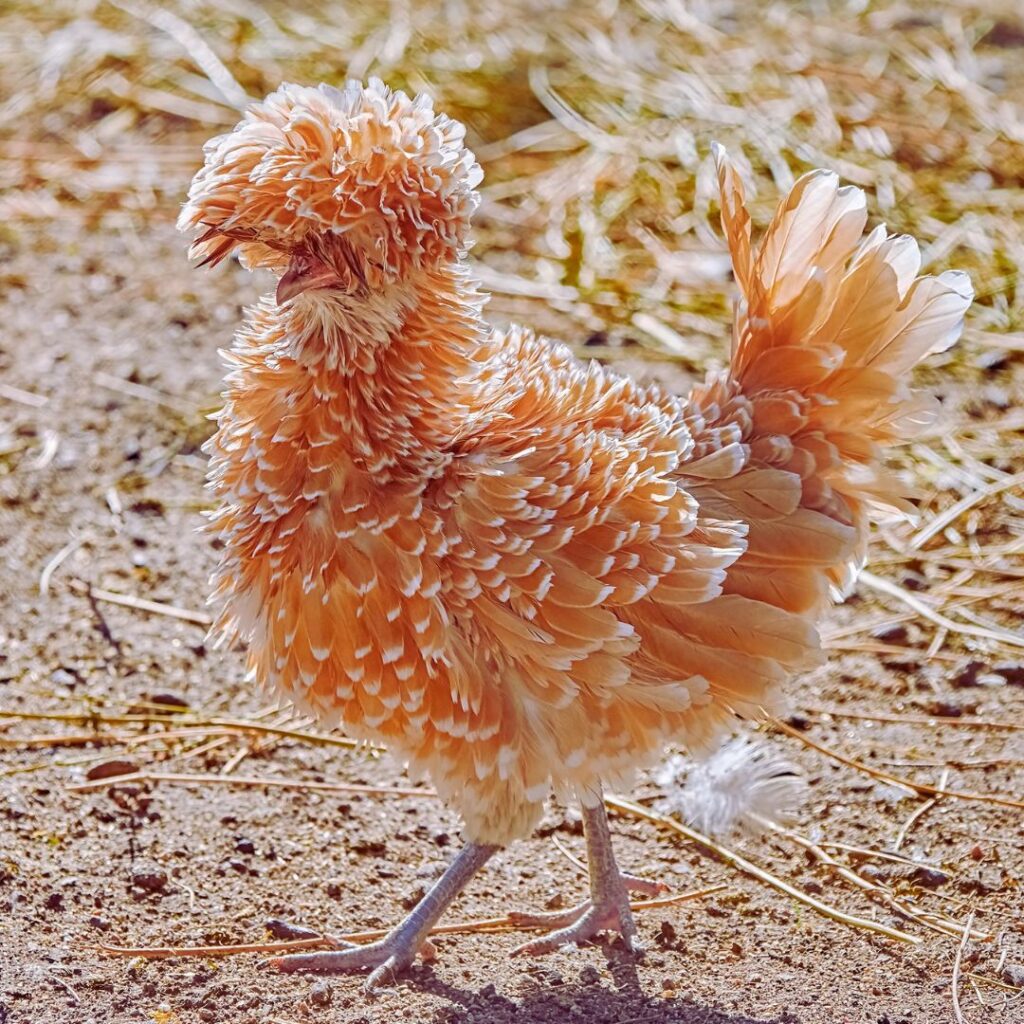
The Chicken Run
Outdoor Run Space
The outdoor space needs to be a minimum of 10 square feet per bird.
You can make the best use of this space by providing perches, sturdy branches, tree stumps, and even old ladders and step stools. All this will allow your bird more variety in their time outdoors.
Fencing height
Provide a six-foot-high secure fence to protect your flock from predators.
Polish chickens are known to be flighty. You’ll want to be prepared by having overhead netting or fencing to keep your birds in the enclosed run area.
Overhead Covering
A Polish chicken can become uncomfortable and sick if their crest feathers are wet from rain or snow.
This is one of those breeds that would be best served with a roofed-in area over the run, especially where the coop meets the run.
Dust Bath
Provide your Polish chickens with a dust bath to keep their feathers in prime condition while preventing mites and lice from taking over. These nasty critters can cause illness and disease.
This activity will help maintain good health and an excellent way for chickens (or any other bird) to stay cool during hot days.
Read more about dust baths here.
Trimming the Head Feathers Of A Polish Chicken
While these adorable head feathers make this breed attractive to chicken owners, they can be a nuisance and a problem for the safety and health of your Polish flock.
Head feathers can get wet even just drinking water, and a morning rain can ruin their day until the sun comes out. The inability of your bird to see can also make Polish chickens aggressive.
One way you can help your Polish bird be more comfortable and see better is to trim its head feathers (without damage to its small v-shaped comb), and it’s quite easy. See the video below.
Is The Polish Breed Good For Free Range Flocks?
Like most chicken breeds, the Polish chickens love to free range when able. However, strong caution needs to be taken when allowing this.
They’re not able to spot danger as easily as other breeds. Free-ranging should be more of a supervised ‘recess’ when you can be out there with them in close proximity.
Are Polish Hens Good For Urban Homesteads?
Probably best to keep these Polish chickens on small hobby farms and larger properties. They can be chatty often and sometimes get pretty loud, which are not great qualities for a ‘good neighbor’ bird.
Are Polish Chicken Breeds Good Backyard Flocks For Hobby Farmers and Homesteaders?
The charismatic Polish chicken is definitely one worth considering if you’re looking for an ornamental yet productive bird suitable for families looking to keep backyard chickens – provided they’re given enough space, proper nutrition, ample fresh air & water, plus frequent visits and supervision from their chicken owners.
Their attractive appearance and friendly, outgoing personalities make them great companions for new and experienced chicken owners.


